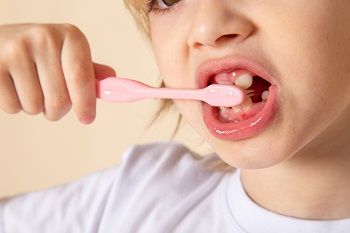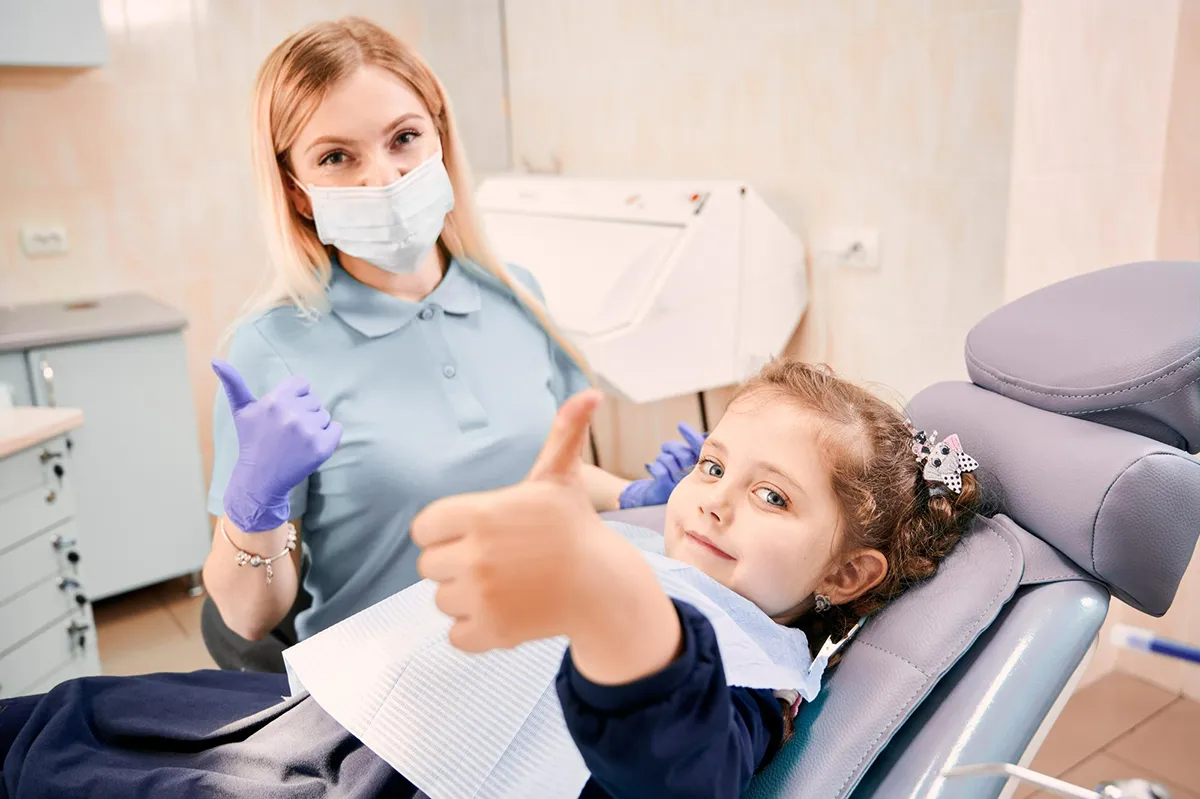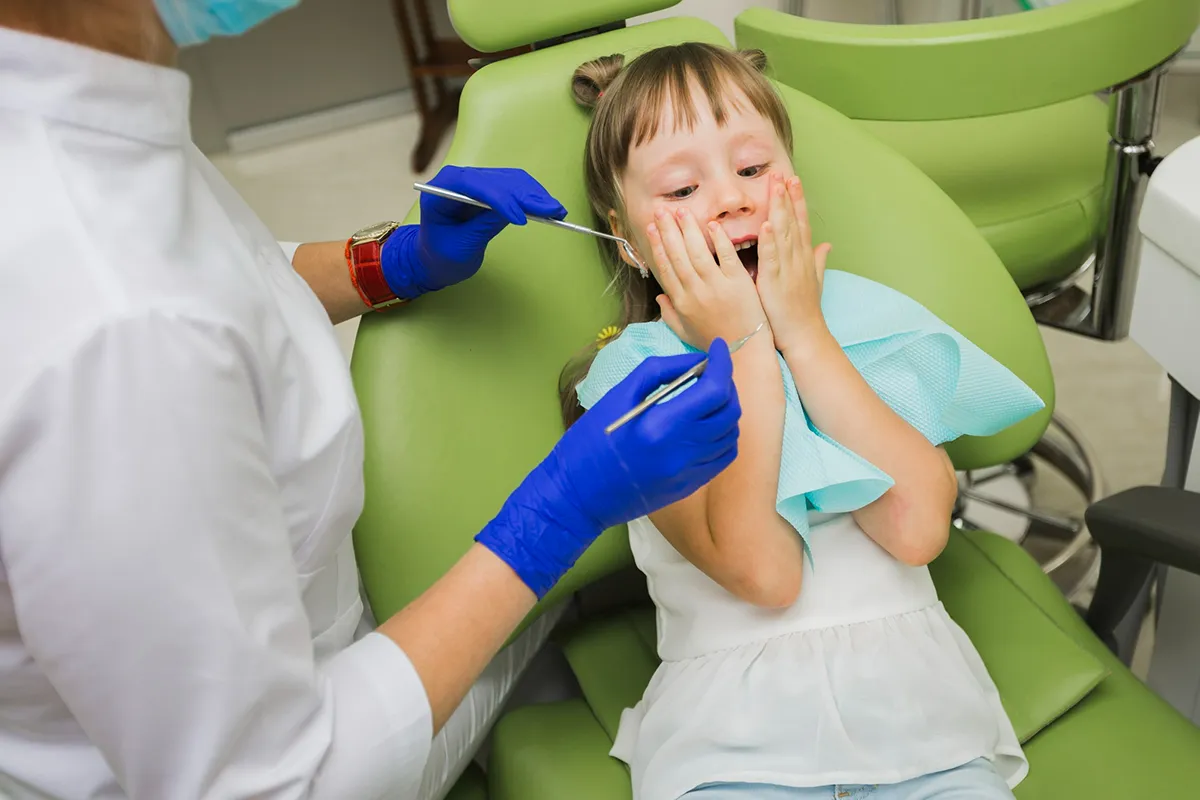Handling Pediatric Dental Emergencies: Actions to Take and Prevention Tips
Regarding our children’s dental health, being prepared for emergencies and taking preventive measures are crucial to ensure their well-being. Pediatric dental emergencies can occur unexpectedly and require immediate attention.
Understanding what to do in such situations and taking proactive steps to prevent them can help safeguard your child’s oral health. This informative guide will explore common pediatric dental emergencies, discuss the appropriate actions, and provide practical tips for preventing these emergencies.
Whether it’s a knocked-out tooth, a toothache, or a dental injury, empowering yourself with knowledge and preparedness will enable you to navigate these situations confidently. So, let’s get started.
Common Pediatric Dental Emergencies
Pediatric dental emergencies encompass a range of situations that require urgent dental intervention. Awareness of these emergency types can help parents and caregivers respond effectively in critical moments. Here are some common pediatric dental emergencies:
- Toothaches can occur due to tooth decay, dental abscesses, or traumatic injuries. They can cause excessive pain and discomfort, making it essential to seek professional dental care.

- Dental Trauma: Accidents or falls can lead to dental trauma, such as fractured, chipped, or knocked-out teeth. Immediate action is crucial in preserving the tooth and preventing further damage.
- Soft Tissue Injuries: Injuries to the lips, gums, tongue, or cheeks can result in cuts, lacerations, or tears. These injuries are usually painful and require medical attention to control bleeding and ensure proper healing.
- Object Lodged in Teeth: Sometimes, things like food particles, seeds, or small toys can become lodged between teeth or gums, causing irritation and potential infection. Removal by a dental professional may be necessary.
- Dental Infections: Untreated tooth decay or abscesses can lead to dental infections, causing severe pain, swelling, and even fever. Prompt dental care is essential to prevent the spread of disease.
- Orthodontic Emergencies: Issues related to orthodontic appliances, such as braces or retainers, can arise. It can include broken wires, loose brackets, or discomfort caused by misalignment. Contacting your child’s orthodontist for guidance is vital in such cases.
- Allergic Reactions: Some children may experience allergic reactions to dental materials or medications used during dental procedures. Recognizing and addressing these reactions promptly is crucial to ensure their safety.
“Dental emergencies in children can be distressing, but with proper preventive measures, you can minimize the chances of your child experiencing them. Establishing good oral hygiene habits and creating a safe environment can significantly reduce the risk of pediatric dental emergencies”.
What to Do in Pediatric Dental Emergencies: Simple Steps to Take
Pediatric dental emergencies can be distressing, but knowing what to do in these situations can make a significant difference in ensuring the best care for your child. Here are simple steps to take during pediatric dental emergencies:
- Stay Calm: It’s crucial to stay calm and reassure your child during a dental emergency. Your positive attitude can significantly influence his response to the situation.
- Assess the Situation: Evaluate the nature and severity of the dental emergency. Determine if it’s a toothache, dental injury, or other issue. Identifying the specific problem will enable you to provide appropriate assistance. Gently examine the affected area. Look for signs of injury, swelling, bleeding, or visible damage to the teeth, gums, or surrounding tissues. This visual assessment can help you assess the severity of the situation.
- Use Soothing Words: Speak to your child gently and soothingly. Use simple and reassuring words to explain the situation and address the dental emergency accordingly. Reassure him that you are there to support him throughout the process.
- Provide Immediate Comfort: If your child is experiencing pain, you can gently clean the area with warm water and use a cold compress on the outside of the cheek to reduce swelling. If your child can communicate, ask him about the pain or discomfort he’s experiencing. The answers can provide valuable information for assessing the emergency.
- Toothache: Rinse your child’s mouth with warm salt water to help alleviate discomfort. If there’s visible debris around the affected tooth, use dental floss to remove it carefully. Avoid placing aspirin directly on the tooth or gum, as it can cause burning.
- Dental Injury: For a knocked-out tooth, handle it by the crown (the chewing surface) and rinse it gently with water. Try to restore the tooth into its socket, if possible. If not, place the tooth in a milk container or a tooth preservation product recommended by a dentist and seek immediate dental care.
- Soft Tissue Injuries: For cuts or lacerations to the lips, gums, tongue, or cheeks, gently clean the area with warm water and apply a clean cloth or sterile gauze to control bleeding. If bleeding persists or the injury is severe, seek prompt medical attention.
- Contact a Dental Professional: Call your child’s dentist or an emergency dental helpline to explain the situation and seek guidance. They will provide specific instructions and may recommend immediate treatment or an appointment.
- Preserve the Tooth: Keeping a knocked-out tooth moist is crucial; place it in milk or a tooth preservation product recommended by a dentist until you can reach dental care.
- Consider Timing: Assess the urgency of the situation. Some dental emergencies, like a knocked-out tooth, require immediate attention, while others may allow for a short delay in seeking professional care. Understanding the timing can help prioritize your response.
Every dental emergency is unique, and professional evaluation and treatment are essential. Promptly seeking dental or medical care is crucial for the best outcome. By implementing these straightforward measures, you can protect your child’s oral health and guarantee a radiant smile that lasts for years.
Ways to Prevent Pediatric Dental Emergencies: Simple Steps for Healthy Smiles
Preventing dental emergencies for children is crucial for their oral health and overall well-being. Following simple steps and maintaining good dental habits can significantly reduce the chances of emergencies. Here are effective ways to prevent pediatric dental emergencies:
- Establish a Routine: Encourage a regular oral hygiene routine for your child, including adequate brushing and teeth flossing. It helps remove plaque and reduces the likelihood of tooth decay and gum disease.

- Balanced Diet: Provide a well-balanced diet; limit sugary snacks and beverages, as they can contribute to tooth decay. Encourage drinking water instead of sugary drinks.
- Dental Check-ups: Schedule regular dental check-ups for your child. These dental visits will allow the dentist to monitor your child’s oral health, detect any issues early on, and provide preventive treatments such as fluoride application and dental sealants.
- Mouthguards for Sports: Let your child wear a properly fitted mouthguard if he participates in sports activities. Mouthguards protect the teeth and jaw from injuries during sports and reduce the risk of dental emergencies.
- Childproofing: Childproof your home to minimize the risk of accidents that can lead to dental injuries. For this, secure cabinets containing cleaning products or other hazardous substances using safety gates and cushion sharp corners or edges.
- Supervise Brushing: Younger children may require supervision while brushing their teeth to ensure they use the correct technique and do not swallow toothpaste. Monitor their brushing habits until they can brush effectively on their own.
- Lead by Example: Be a helpful role model for your child’s oral health by practicing good dental habits. Brush and floss together as a family to make it a fun and regular activity.
- Dental Education: Teach your child about the importance of oral hygiene, including proper brushing and flossing techniques. Explain why regular dental check-ups are necessary and how to recognize and avoid harmful habits like nail-biting or chewing on complex objects.
- Emergency Preparedness: Familiarize yourself with basic first aid for dental emergencies. Keep a dental first aid kit handy with essentials like clean gauze, a small container, and the contact information of your child’s dentist.
Following these preventive measures will reduce the risk of pediatric dental emergencies. Remember, your child’s oral health is a lifelong investment, and instilling good dental habits from an early age will set him on the path to healthy smiles for years to come.
Final Words
Pediatric dental emergencies require prompt action and a calm approach. Stay prepared by knowing what to do in common emergencies like toothaches, dental injuries, and soft tissue injuries. Contact a dental professional for guidance and seek immediate care when necessary.
Contact your Stockton dentist for kids, Sajjad Rizvi DDS, at Happy Kids Dental to learn more about Pediatric Dental Emergencies: Actions to Take and Prevention Tips.
Resource:
5 Warning Signs of Dental Emergency in Children
*This media/content or any other on this website does not prescribe, recommend, or prevent any treatment or procedure. Therefore, we highly recommend that you get the advice of a qualified dentist or other medical practitioners regarding your specific dental condition.*
Subscribe To Our Newsletter
Get Updates And Learn From The Best


